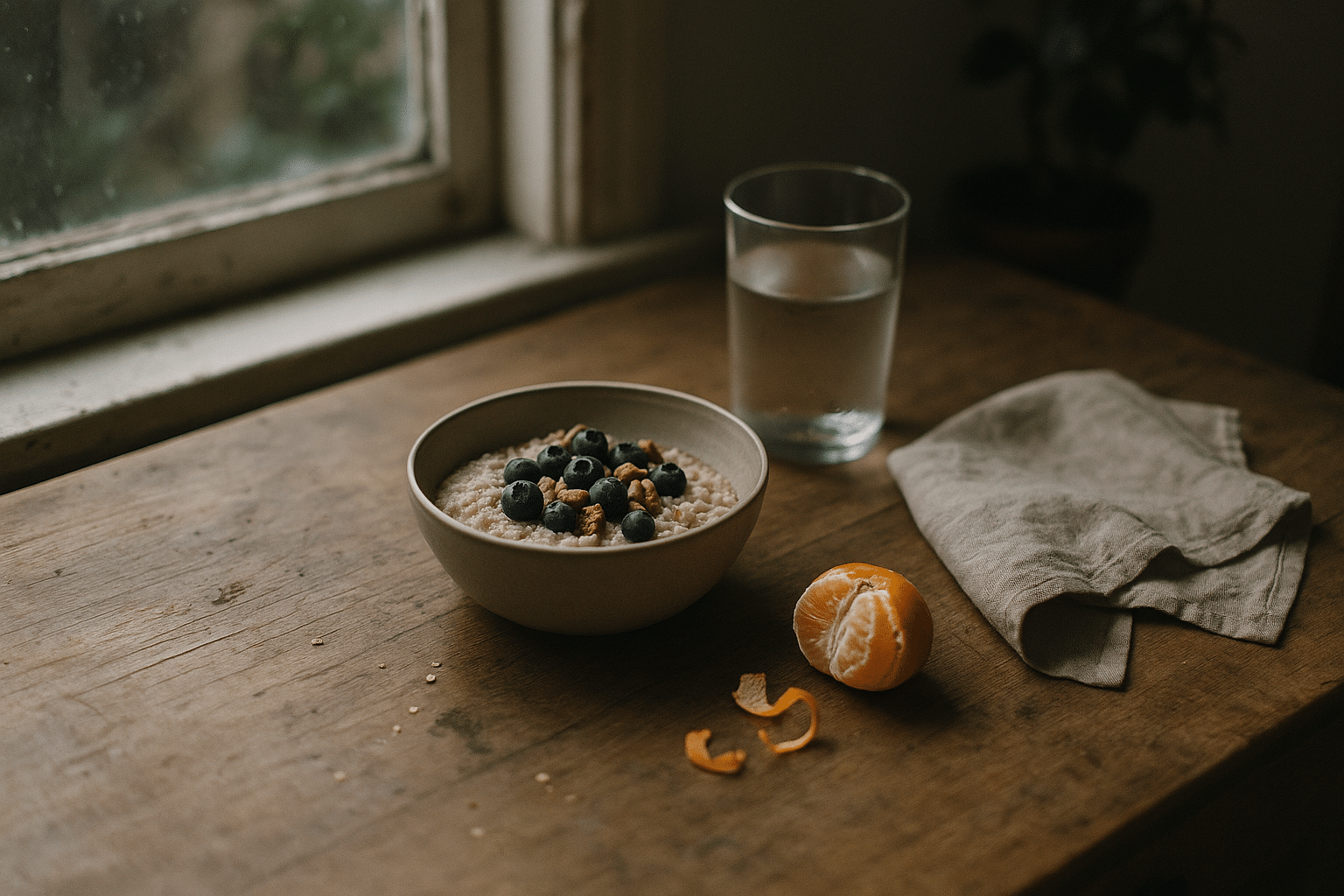
A Practical Guide to Everyday Health: Evidence-Informed Habits You Can Start Today
Outline
– Why everyday habits matter and how they interact across sleep, nutrition, movement, stress, and preventive care
– Sleep as the keystone: circadian rhythm basics, practical routines, and troubleshooting
– Nutrition and hydration you can sustain: plate-building, fiber, protein, and planning
– Move more, stress less, prevent early: activity targets, micro-recovery, habit design, and checkups
Sleep: The Metronome of Wellbeing
When you think about health, it helps to start where the day ends: with sleep. Rest is the quiet architect behind memory, mood, immune function, and metabolic efficiency. Most adult guidelines recommend roughly 7–9 hours per night, but quality and consistency matter as much as quantity. Think of sleep as a metronome. When it keeps steady time, all the other instruments of your life—food choices, motivation to exercise, emotional balance—play in tune.
Why is sleep so influential? A stable sleep-wake rhythm tunes hormones that influence appetite and energy regulation. Short sleep can nudge hunger hormones upward and fullness signals downward, making highly palatable snacks harder to ignore. It also alters reaction times and attention, which has been linked to higher accident risk. The takeaway: a reliable schedule is not a luxury; it is scaffolding for your day’s decisions.
Practical steps to improve sleep stability can be refreshingly simple. Aim to anchor the same wake-up time most days, including weekends, because the first light exposure you get sets your circadian clock. Morning daylight—even on cloudy days—helps your brain map “daytime,” while a consistent wind-down later marks “night.” A cool, quiet, darker bedroom around 18°C/65°F supports deeper sleep for many people. Caffeine has a long half-life, so consider a cutoff 6–8 hours before bedtime; alcohol may feel relaxing but tends to fragment sleep later in the night. Heavy meals close to bedtime and late intense workouts can be stimulating for some; experiment to see your personal response.
If you need a nap, keep it brief and earlier in the day. Many people find 10–20 minutes refreshing without grogginess. For those who struggle to fall asleep, a pre-sleep routine can help your nervous system downshift: dim lights, reduce stimulating media, and use a repeatable sequence—perhaps a warm shower, light stretching, and reading. You might also try slow breathing, extending your exhale slightly longer than your inhale for a few minutes.
Quick wins you can try this week:
– Wake at a consistent time within a 30-minute window
– Get outdoor light exposure within 1–2 hours of waking
– Keep the bedroom cool, dark, and quiet (or use a simple sound buffer like a fan)
– Create a 30–60 minute wind-down ritual, screens optional
– Set a caffeine and large-meal cutoff that fits your schedule
Finally, persistent issues deserve attention. Loud snoring, witnessed breathing pauses, or chronic insomnia are signals to speak with a qualified clinician. Personalized guidance can be pivotal, especially if sleep troubles coexist with pain, mood changes, or other health conditions.
Nutrition and Hydration You Can Actually Maintain
Nutrition fuels your day-to-day performance and long-term resilience, but it works best when it aligns with your lifestyle. Instead of rigid rules, focus on patterns. A practical plate often includes a generous serving of vegetables or fruit; a source of protein; a portion of whole grains or other complex carbohydrates; and a thumb-sized portion of healthy fats. Many public guidelines suggest aiming for about 25–38 grams of fiber per day from foods such as beans, lentils, whole grains, berries, and nuts, noting associations between higher-fiber diets and lower risk of cardiovascular disease and certain metabolic conditions.
Protein supports tissue repair and satiety. A general baseline of about 0.8 grams per kilogram of body weight per day is commonly recommended for adults, though needs vary with age, training load, and goals. Distributing protein across meals can help with muscle maintenance, especially as we age. Carbohydrates are often misunderstood; complex sources like oats, brown rice, quinoa, potatoes, legumes, and fruit bring fiber, micronutrients, and steady energy. Fats from olive oil, nuts, seeds, and avocados contribute to hormone production and vitamin absorption. Rather than vilifying any category, consider balance and portion awareness.
Hydration is another quiet powerhouse. Fluid needs shift with climate, body size, and activity. A useful everyday cue is the color of your urine—aiming for a pale-straw shade tends to correlate with adequate intake for many people. Water remains the simplest choice. If you prefer flavor, add citrus slices or herbs. For longer or hotter workouts, a pinch of salt in water and a carbohydrate source may support performance; tailor to your sweat rate and duration.
Practical, sustainable strategies:
– Build your cart around staples: frozen vegetables, canned beans, eggs, plain yogurt, oats, brown rice, nuts, and seeds
– Prep “base layers” once, remix all week: roast a tray of vegetables, cook a pot of grains, and grill or bake a protein
– Use visual guides: fill half your plate with produce, one quarter with protein, and one quarter with complex carbohydrates
– Keep fruit visible and ready-to-eat; place sweets out of immediate reach to add a small pause before choosing them
Flexible timing helps. Some people feel energized by a hearty breakfast, others by a later first meal. The winning approach is the one you can sustain while meeting nutrient needs. If evenings trigger less mindful eating, consider shifting more protein and fiber earlier in the day to improve satiety. If weekends derail your routine, plan one or two anchor meals that feel enjoyable and substantial, so you are not starting from scratch on Monday.
Myth-checks worth noting:
– “Carbs are bad.” Quality and amount matter more than a blanket label. Complex sources support training and cognitive tasks.
– “Fat makes you gain weight.” Excess energy from any source can lead to weight gain. Dietary fats play vital roles when consumed in balanced portions.
– “Supplements replace food.” Whole foods provide a network of nutrients and fiber that single capsules cannot mimic. Consider supplements only to fill confirmed gaps and after professional input.
If you have medical conditions, allergies, or specific goals, a qualified practitioner can personalize these ideas. The aim here is a steady pattern you enjoy—one that feeds your life rather than dominating it.
Move More, Stress Less, Prevent Early
Movement is a daily vote for your future self. Many public health recommendations suggest accumulating 150–300 minutes per week of moderate activity (like brisk walking) or 75–150 minutes of vigorous activity (like fast cycling), plus muscle-strengthening activities at least two days per week. Yet the most overlooked engine of energy burn is everyday movement—walking, standing, taking stairs, gardening—often called non-exercise activity. These small actions add up metabolically and make intentional workouts more effective.
A practical framework is to climb an “activity ladder.” Start with a foundation of steps spread through the day; layer on brief “movement snacks” such as 10 bodyweight squats, a 30-second plank, or a few flights of stairs between tasks; and schedule two to three short resistance sessions weekly. Compound exercises—push, pull, hinge, squat, carry—work large muscle groups efficiently. Mobility work (gentle joint circles, dynamic stretches) prepares tissues and maintains range of motion. If you sit for long periods, set a low-friction cue: stand up every hour and move for two minutes.
Sample week you can adapt:
– Mon/Wed/Fri: 20–30 minutes of brisk walking or cycling; finish with 2–3 sets each of squats, rows, and a hinge (like hip hinges or deadlifts with safe form)
– Tue/Thu: Mobility circuit (5–10 minutes) plus a short interval session such as 6 x 1-minute brisk efforts with 1–2 minutes easy
– Sat/Sun: Longer, enjoyable movement—hike, swim, or a playful activity—plus gentle stretching
Stress management amplifies the benefits of movement. Short, consistent practices calm the nervous system and clarify thinking. Slow breathing—about 4–6 breaths per minute for 2–5 minutes—can lower perceived stress in many people. A 60–120 second cold water face splash or a brief walk outdoors often resets attention. Nature exposure, even city trees and parks, is linked with improved mood. Journal prompts (“What went well today?”) cultivate a bias toward noticing progress. Social connection is protective too: a quick call or shared walk multiplies benefits.
Prevention rounds out the picture. Regular health checkups help detect issues earlier, when options are usually broader. Common elements include monitoring blood pressure, blood lipids, and glucose, updating vaccinations, and following age-appropriate cancer screenings; specific timing depends on your personal and family history and local guidelines. Track simple signals over time: resting heart rate, perceived energy, sleep regularity, and waist circumference are practical markers for many people. If something trends in the wrong direction, act early with support.
Design your environment to work for you:
– Friction: Keep a yoga mat or dumbbells visible; lay out walking shoes near the door; place a water glass at your workstation
– Fuel: Stock convenient, nutrient-dense snacks (fruit, nuts, yogurt) at eye level
– Cues: Pair habits—brew morning coffee, then step outside for light; finish a meeting, then do 10 squats; brush teeth, then 2 minutes of breathing
Progress is rarely linear. Expect plateaus and detours; they are part of adaptation. The key is to reduce the cost of restarting. Keep your workouts short but frequent when life is hectic, and let “good enough” carry you forward until capacity returns.
Your Next Step: Start Small, Stay Curious
Health improves in the ordinary moments—how you sleep tonight, what you put on your plate at lunch, whether you walk for ten minutes between tasks, and how you reset after a stressful email. Choose one tiny action you can repeat most days this week: wake up at a consistent time, add one serving of vegetables to a meal, or take a 10-minute evening walk. Tie it to a cue you already do, track it with a simple checkmark, and review your progress on Sunday. If you need more support or have medical questions, reach out to a qualified professional who can tailor guidance to your context. Small, steady steps compound into meaningful change; your everyday choices are already shaping a healthier tomorrow.


